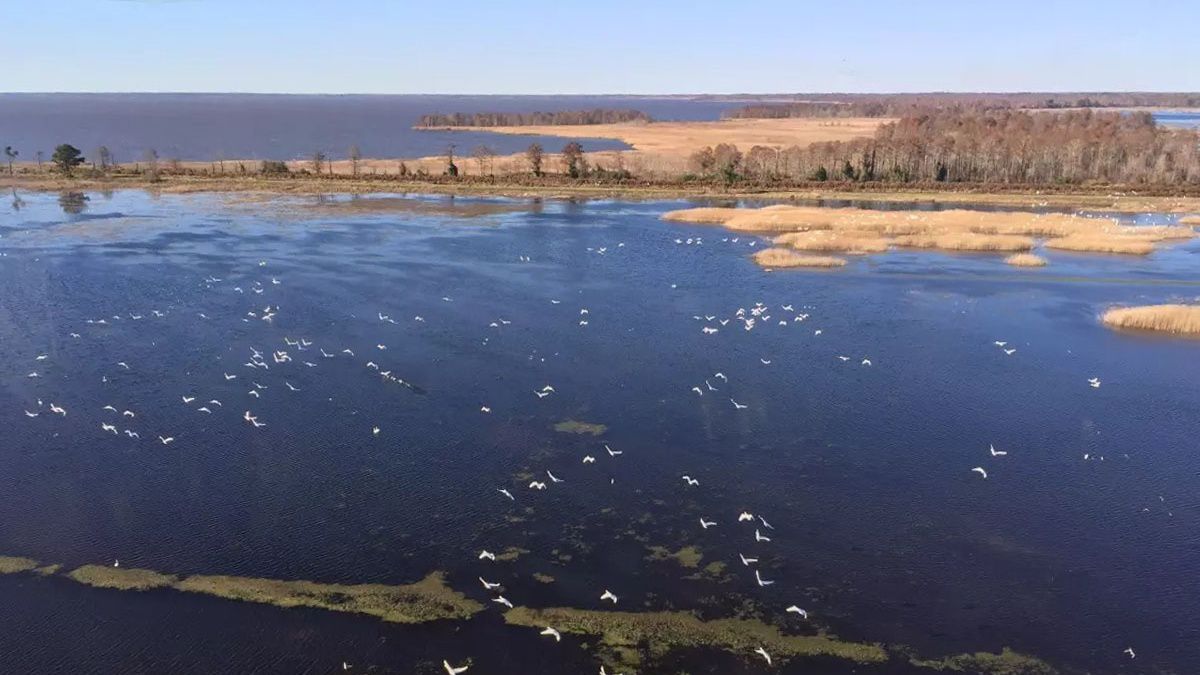Lake Mattamuskeet, on the Albemarle Peninsula, is the largest freshwater lake in North Carolina. It’s the centerpiece of the Mattamuskeet National Wildlife Refuge, a pristine piece of eastern North Carolina marsh, swamp and forest around the shallow lake.
But beneath the surface, toxic cyanobacteria, also known as blue-green algae, has been taking over the lake.
“Lake Mattamuskeet has experienced declines in water quality, transitioning from a lake dominated by dense grass beds to one dominated by microscopic blue-green algae,” according to the U.S. Fish and Wildlife Service, which oversees the lake and the wildlife refuge.
“Fueled by excess nutrients, these cyanobacteria, along with the high levels of suspended sediments in the lake, block sunlight and prevent growth of submerged grasses that are very beneficial to fish and wildlife,” USFWS said in a public notice.
Researchers with the University of North Carolina Institute of Marine Sciences and BlueGreen Water Technologies want to study how to get the toxic algae out of the lake using a pesticide.
The Fish and Wildlife Service is taking public comment on the proposal until the end of the month.
The research would use a pesticide, described as “a sodium percarbonate-based algaecide, Lake Guard Oxy,” in controlled areas to study its effects, according to the draft environmental assessment.
The proposal would treat the water in about 600 acres in a handful of coves around the perimeter of the lake, with barriers to keep it contained.
“The treatment would be extensively monitored prior to, during, and after treatment to determine its success in reducing cyanobacteria and to evaluate possible impacts to other resources,” according to the proposal.
Researchers say they will use the results to evaluate the treatment and study if it improved water quality and helped restore vegetation in the lake.
Any other treatments would have to be approved by state and federal regulators.









